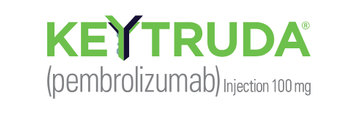
FDA Grants Accelerated Approval to First Oral Targeted Therapy for HER2-Mutant Lung Cancer
The FDA has granted
HER2 mutations occur in about 2% to 4% of non-small cell lung cancers (NSCLC) and are linked to a poor prognosis and a higher risk of brain metastases. Comprehensive biomarker testing, including next-generation sequencing, is recommended to determine whether a patient is eligible for HER2-targeted therapy.
“Until now, existing treatment options for HER2-mutant NSCLC consisted of chemotherapy with or without immunotherapy and HER2-directed antibody drug conjugates (ADCs), which require patients to travel to an infusion center or their provider’s office to receive the therapy every few weeks,”
Hernexeos is “now the first and only FDA-approved orally administered, targeted treatment” for HER2-mutant advanced NSCLC in previously treated patients, she stated. The FDA granted the approval on Aug. 8, 2025.
HER2-targeted cancer treatment started with breast cancer; the FDA approved Herceptin (trastuzumab) in 1998. But HER2 has now been identified as a target in other solid tumors, including gastric, biliary tract and lung cancer.
Hernexeos is indicated to treat unresectable or metastatic nonsquamous NSCLC in adults whose tumors have certain HER2 activating mutations and have received prior systemic therapy. Full approval for this use will depend on confirmation of clinical benefit in follow-up trials. The FDA also approved the Oncomine Dx Target Test to detect these mutations and identify eligible patients.
Approval was based on the results from patients with advanced, HER-mutated NSCLC who took part in the open-label, multicenter
Among a group of 71 patients who had received prior platinum-based chemotherapy but no prior HER2-targeted therapy, 75% responded to treatment, with 6% achieving a complete response and 69% achieving a partial response. A duration of response of at least six months was observed in 58% of patients in this group.
In a separate group of 34 patients who had received both chemotherapy and a HER2-targeted ADC in the past, 44% responded to treatment, with 27% maintaining that response for at least six months.
The
Hernexeos is an oral tablet taken once daily. It can be taken with or without food and continued until disease progression or unacceptable toxicity.
“Our priority is to ensure that all patients who are prescribed Hernexeos have access to it because we understand the impact cancer can have,” Brown said via email. “It is our goal to make Hernexeos easily accessible through a comprehensive patient support program,
Newsletter
Get the latest industry news, event updates, and more from Managed healthcare Executive.





















































